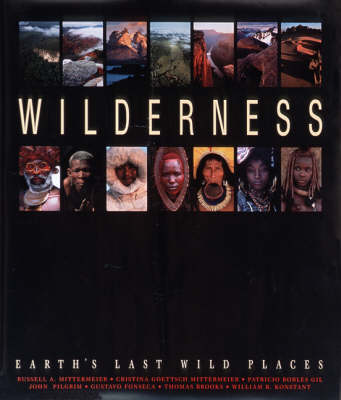Conservation International's "Hotspots" placed that organization at the forefront of global conservation efforts. "Wilderness: Earth's Last Wild Places" continues the efforts made in that previous volume, combining nearly 500 images of untamed lands and rare glimpses of the people who inhabit them with the most current scientific analyses of their endangered ecosystems. To qualify as "wilderness", the areas included must have 70 percent or more of their original vegetation, cover at least 10,000 square kilometres, and have fewer than five people per square kilometre. "Wilderness" identifies 37 wilderness areas around the globe - including tropical rain forests, wetlands, deserts and arctic tundra, from Amazonia to the Congo Forests of Central Africa to the complex of North American deserts - and presents the research of nearly 200 specialists carried out over two years by Conservation International's Centre for Applied Biodiversity Science with support from its Global Conservation Fund.
The result is a detailed document of the biological riches that can be found in each of the wilderness areas, with chapters that describe and illustrate them, highlight the human cultures unique to each area, and explain the threats to each region and the conservation measures in place. The result of a collaboration among CEMEX, Conservation International and Agrupacion Sierra Madre, "Wilderness" should enjoy the same reputation as the earlier Conservation International books - a volume that presents vital information on the earth's biodiversity and a realistic program of conservation complemented by state-of-the-art photography.
- ISBN10 9686397698
- ISBN13 9789686397697
- Publish Date 1 January 2005
- Publish Status Active
- Out of Print 27 July 2021
- Publish Country US
- Imprint University of Chicago Press
- Format Hardcover
- Pages 576
- Language English
